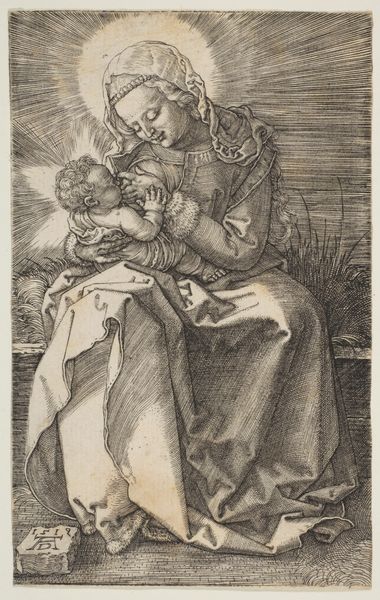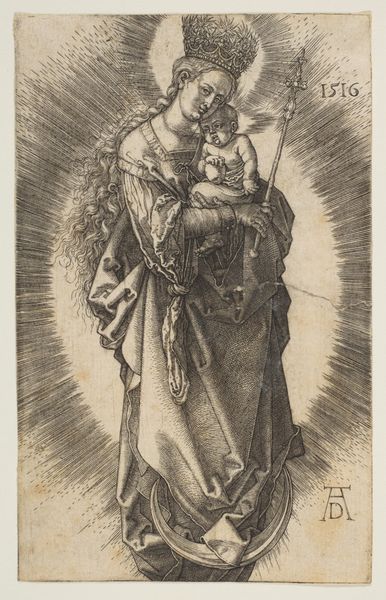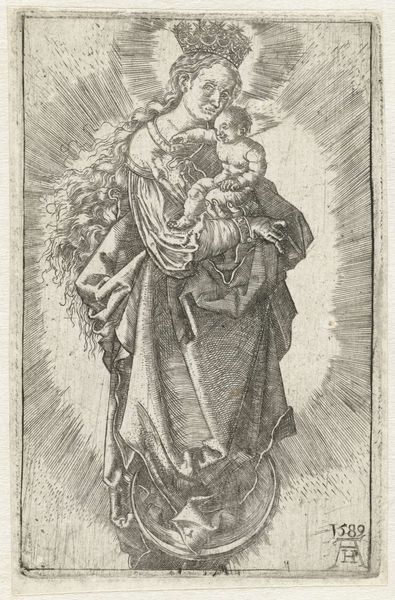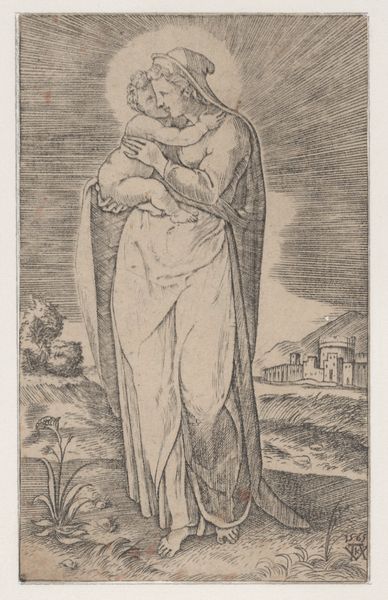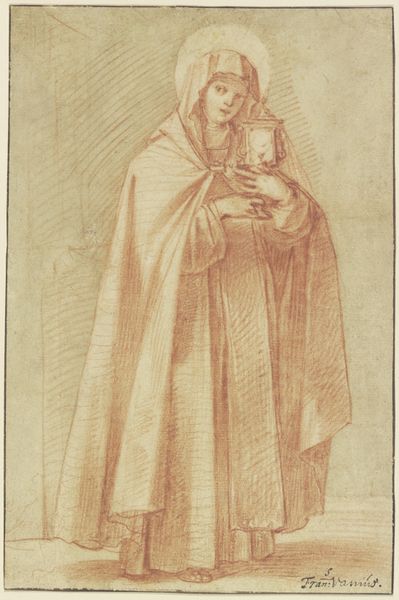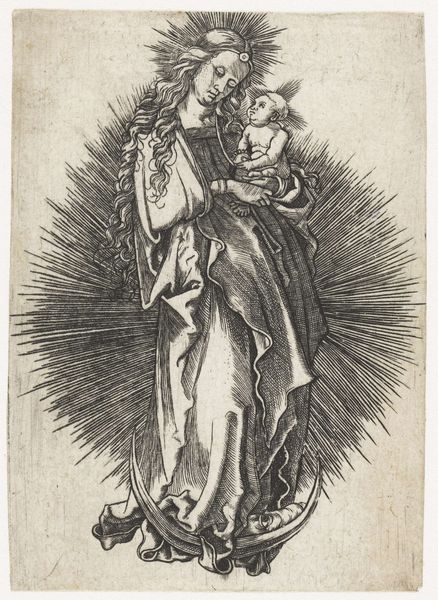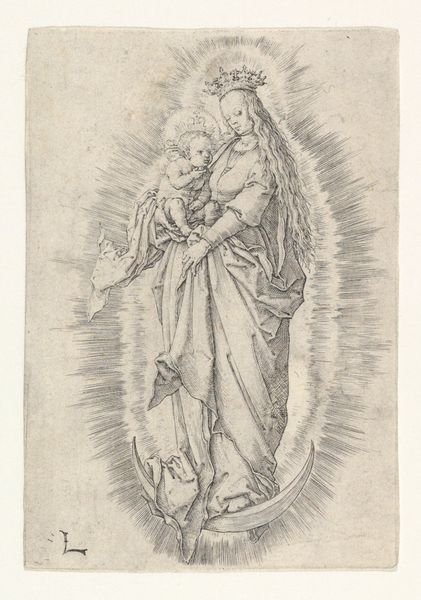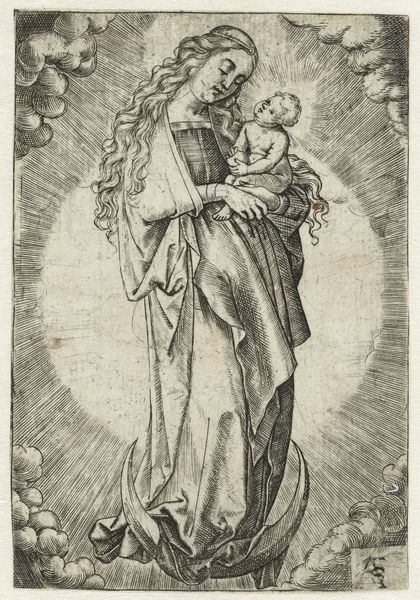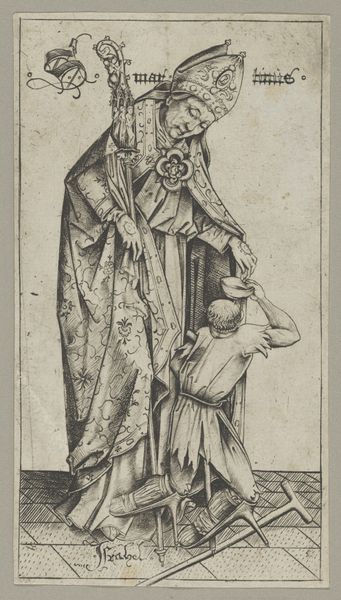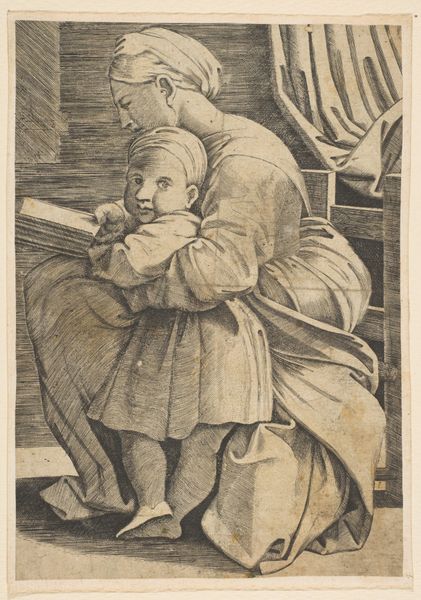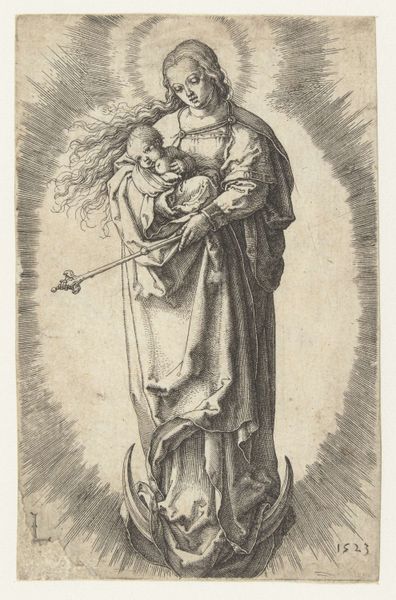
drawing, print, engraving
#
drawing
# print
#
figuration
#
pencil drawing
#
northern-renaissance
#
engraving
Dimensions: Sheet: 4 5/8 × 2 15/16 in. (11.7 × 7.5 cm)
Copyright: Public Domain
Albrecht Dürer made this engraving of the Virgin and Child on the Crescent in 1514, a time of great religious and social change. The image presents a traditional Christian subject, but its delicate lines and intricate details reflect the growing influence of humanist thought on art. The artwork’s visual codes place the Virgin Mary on a crescent moon, a symbol of purity and divinity, while the diadem signifies her queenship. Dürer was working in Nuremberg, a major center of the Holy Roman Empire, and his art often grappled with the social structures of his time. Nuremberg was a hub of both religious piety and intellectual innovation. Printmaking as an industry played a key role in the spread of new ideas. To understand Dürer better, we might consult letters, historical records, and theological texts, as well as the scholarship that traces the rise of print culture. The meaning of art is always contingent on its social and institutional context, and the historian’s role is to bring that context to light.
Comments
No comments
Be the first to comment and join the conversation on the ultimate creative platform.


